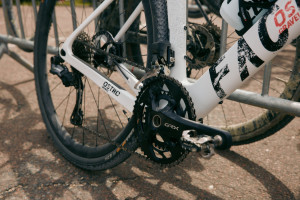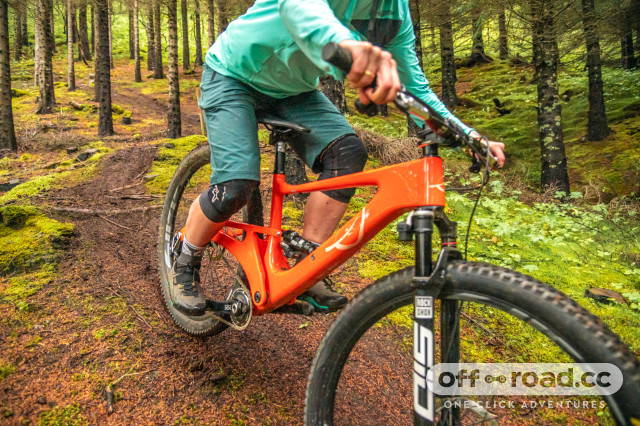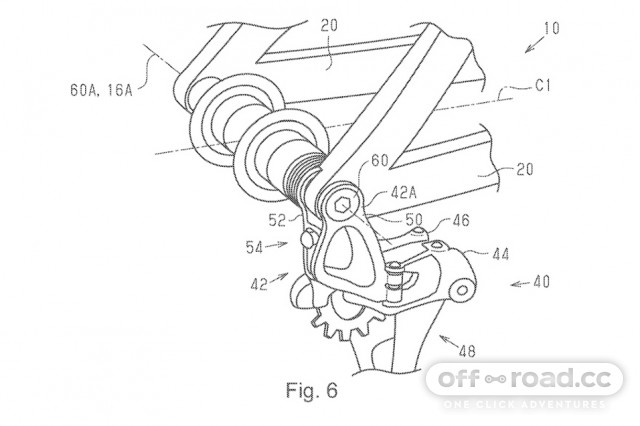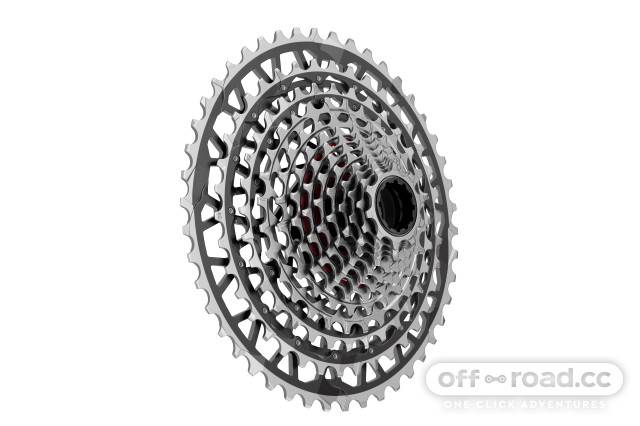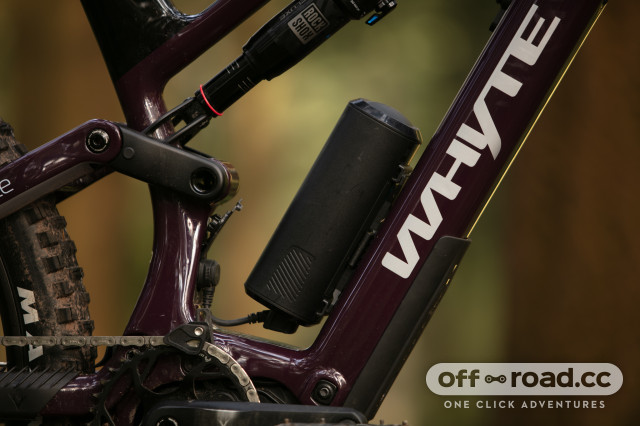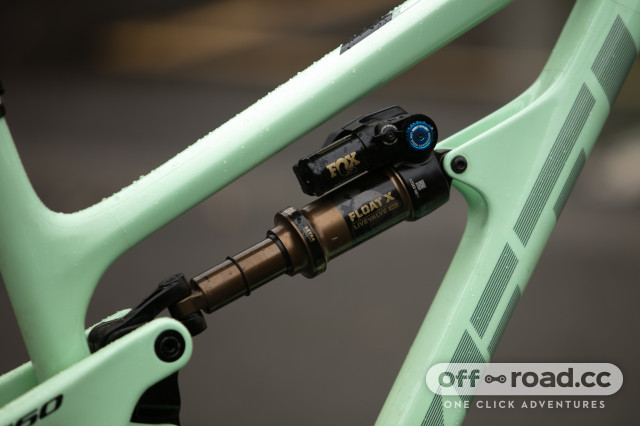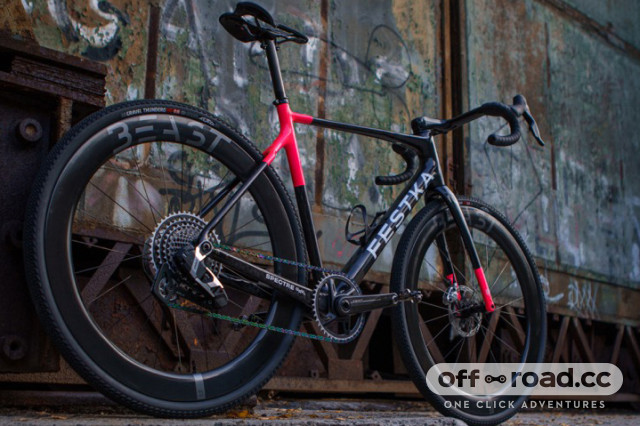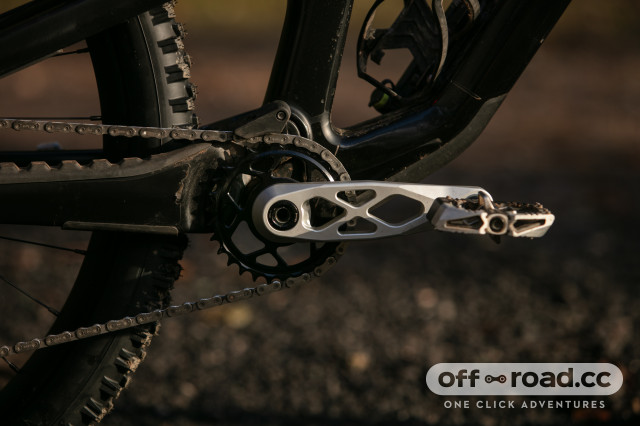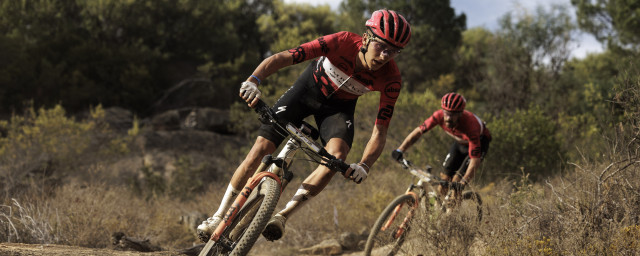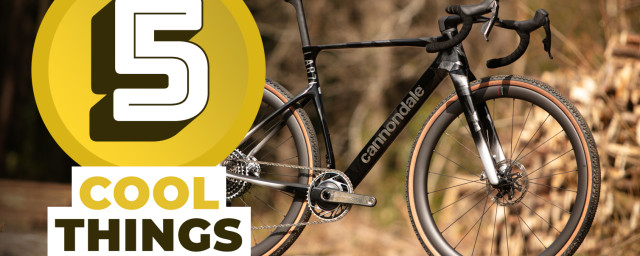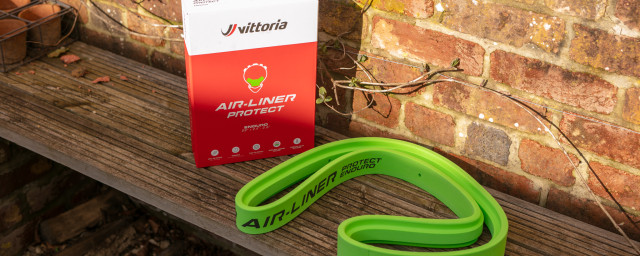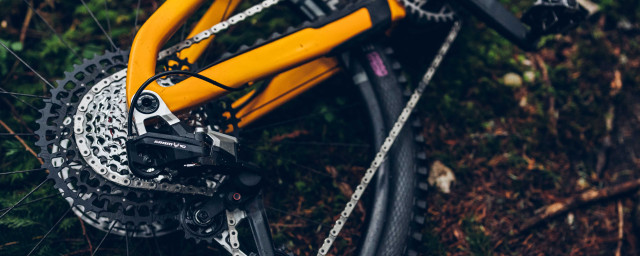Liam's 2025 tech predictions
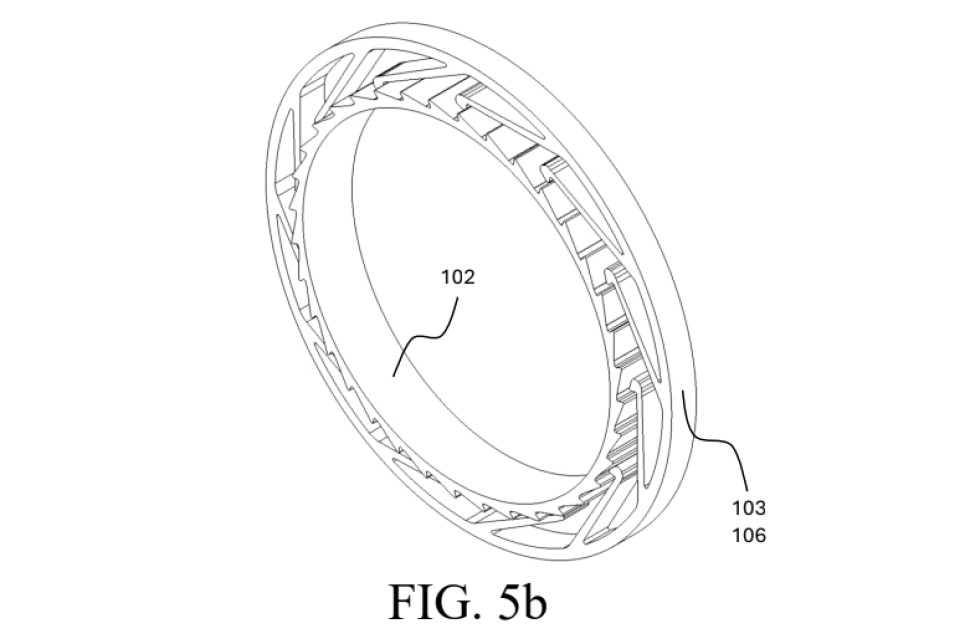
Every year brings its trends, whether it's new off-road-specific aerodynamic componentry or geometry numbers going one way and then back the other. As 2024 has seen the cycling industry bounce back to a point, we’ve witnessed plenty of cool things come to the market. As usual, that won’t stop as we dive into 2025. Here are some of the techy things I think we’re going to see.
- Does cycling depend too much on technology?
- Do technical courses make for better cross-country MTB racing?
- Liam's off-road tech predictions for 2024 - Was he right?
Big tyres are going to become standard in XC
This year has been solid proof that cross-country racing is getting pretty-damn spicy. From that big rock drop into more rocks at Crans-Montana to the all-out brutality of Val di Sole, XC riders are expected to tackle incredibly demanding terrain while riding on little more than 100mm of suspension travel.
Such little travel figures are chosen to balance weight savings with efficiency, among other factors so these riders need all the help they can get and the next step is fatter tyres. It’s something we’re already seeing to a point with the Maxxis Rekon Race available in a 2.6in casing but it’s not commonplace on the XC circuit. However, Lauf, reckons it might become the new standard and is committed to wide tyres as it has worked with Goodyear to bring custom 2.6in wide Peaks to its Elja bike.
Wider tyres are good for a few reasons; they provide more grip, but the key factors for XC riders are that they better fend off punctures and damp vibrations. Yes, they weigh more, but it seems a natural step given that XC bikes are quickly being built to be more aggressive to suit the demands of modern racing.
Big tyres aren’t without their disadvantages though. In the trail and enduro scenes, riders have pulled back from 2.6in tyres as they can squirm under heavy compressions. On cross-country bikes, with tyres that typically aren’t as well supported through lighter and less protective casings, likely, this will also be the case.
The drivetrain race is going to heat up… Finally
In the blue corner is SRAM, a brand that’s been establishing its T-Type AXS drivetrains throughout the industry. In fact, I’ve ridden two MTBs this year with something that’s not T-Type. In the red corner is Shimano, a brand that’s previously focussed more on its bout with Bosch and the gravel sector than its MTB drivetrains. It’s the ninth round, and Shimano is out for the count. I'm ignoring CUES here and, given the current climate, CUES was a great shout.
In 2025, the ref is close to counting to ten but there’s got to be something up Shimano’s sleeve to keep the Japanese drivetrain brand in the fight for its mountain bike drivetrains. It’s about time that Di2 has come to the mountain bike sector and, to compete, it’s going to have to be something rather special. Last year, I predicted that it would turn up, but it didn’t
Although I am completely speculating here, we’ve seen patents and teases of new brakes from Shimano, slated to be new Saints or similar so we may see those released next year. And often when it comes to drivetrain brands and Shimano specifically, new brakes mean new gearsets.
off.road.cc on WhatsApp
All the latest offroad cycling news, tech and buying advice straight to your phone.Follow our WhatsApp channel here
We’ll see more 13-speed groupsets
Needless to say SRAM has been storming it with its drivetrain releases, especially so with the new Red XPLR AXS. Although it's not the first groupset to offer 13 gears, it is the first to tune those gears especially for use in gravel racing and it makes perfect sense.
Let's face it, 2x setups require extra maintenance and can be a little finicky when it comes to tuning, which are just a couple of reasons why 1x drivetrains are the standard on mountain bikes, and becoming dominant in gravel. But there’s one downside, traditional 12-speed cassettes, despite their large ranges, have quite large jumps between each gear which can hamper cadence and power transfer.
Thirteen-speed cassettes mean that brands can tune each gear to match each other more closely, while still achieving a wide range and benefiting from the joys of a single chainring.
Whether we’re going to see Red XPLR trickle down (which I reckon is fairly likely) or see a 1x Shimano GRX setup, I believe that 13 gears on gravel is a step forward and something we’ll see more of in 2025.
There are going to be more small-capacity full-power e-MTBs that rely on range extenders
Electric MTBs and e-bikes in general are evolving at an alarming rate, getting lighter, more potent and well, just better. Late in the year, Whyte unveiled the E-Lyte Evo, a bike kitted with a full power, 85Nm, 600W motor with a comparatively measly 400Wh battery. At first, this sounds like the wrong idea and, in practice, it is – but the 250Wh PowerMore range extender is included in the box and the asking price.
With that, Whyte has created an e-MTB that’s not only rather light, but it’s the best handling e-bike I’ve ridden to date, and it’s receiving plenty of praise throughout the press.
I think that bike is the start of something and we’ll see more brands follow suit, creating their own full power options with smaller batteries for lower system weights, but with the option to boost the battery capacity with a range extender. Not only might it produce better bikes for more people but it’ll also improve the sales of range extenders.
More brands are going to offer wireless suspension components
Although this came true in my 2024 predictions, I’m going to carry this one over. RockShox is no longer the only brand with wireless suspension adjustment with its Flight Attendant technology. Earlier in the year, Fox joined the fray with Live Valve Neo. Of course, there’s also SR Suntour’s TACT system, made famous by the Pinarello duo of Tom Pidcock and Pauline Ferrand-Prevot.
Live Valve Neo only adjusts the rear shock and is focused on trail and enduro riding. It seems the only natural progression here is to move the technology to cross-country suspension and for it to work at both ends of a bike.
Of course, that’s just Fox. Ohlins has been playing with electronic lockouts on the downhill circuit, and it’s about time the Swedish brand unveiled what it’s working on to the masses.
UCI-type gravel racing will have a greater influence on gravel bike design
Top-level bike racing always has a direct impact on bike design. Whether it’s road or MTB, brands use elite racers to develop new technologies and this year, gravel has seen a huge shift towards aerodynamics. That can mainly be credited to the UCI recognising gravel and holding the Gravel World Championships.
In pursuit of speed, the gravel genre has experienced an influx of aerodynamic goodies inspired by the rise of gravel racing and existing bits and bobs found on aero road bikes. Now, with this style of gravel racing very much in its infancy, are we going to see more aero products hit the gravel market and what’s next – gravel-specific hill-climb bikes?
We’ll see shorter cranks on more bikes
Crank length has become a big talking point over the last couple of years with 5Dev and Hope leading the charge. At the moment, bikes come with 170mm cranks as standard, generally speaking with very few coming with anything shorter, despite the benefits that they pose. Namely, those are more ground clearance, better posture over the bike and some weight saving.
Specialized is one brand that ships its bikes with short cranks, notably, the Turbo Levo gets 160mm cranks, and the Turbo Levo SL comes with 165mm cranks. YT Industries has joined the party with its Decoy SN donning 160mm units. It’s safe to say that shorter cranks are becoming more common on e-MTBs but there are benefits to be had on regular mountain bikes, too, with few downsides.
With geometry levelling out a bit across the industry, brands are going to look at other areas of their bikes to improve the ride and crank length will be one of them.
